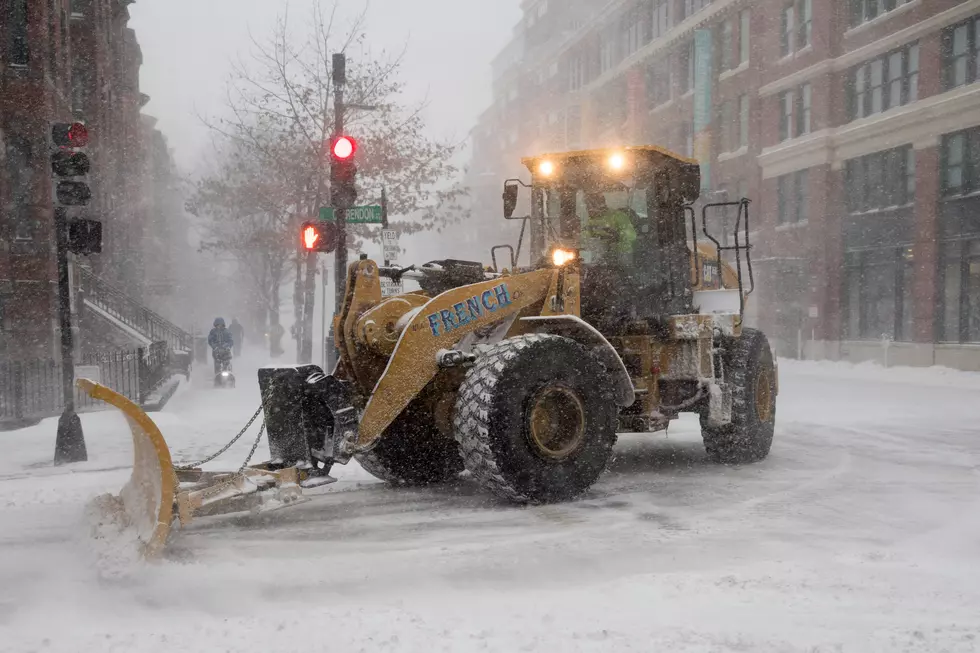
Hurricane Sandy: Preparation is Key!
Even though weather sources haven't quite confirmed the impact that Hurricane Sandy will have on Buffalo, we should still hope for the best and prepare for the worst! Most weather forecasters are predicting heavy rain and strong winds for the area but some are predicting a small possibility that Sandy may bring the dreaded "S" word, SNOW! Either way, Sandy can have a major impact on Buffalonians through this week. Hurricane Katrina left 4,500 Buffalo residents without power in 2005 and The October Lake Storm "Aphid" dropped nearly 2 feet of snow on us in 2006! So with that said, it's always best for you and your loved ones to be prepared whether it's for flooding rains or heavy snow. Check out the list below of ways that you can begin to prepare TODAY for Hurricane Sandy:
Anticipating a Flood
What are the weather factors you need to watch for to prepare for a flood?
Unusually heavy rain over several hours, or steady, substantial rain over a period of several days
Rains that occur in conjunction with a spring thaw
Hurricanes or tropical storms that impact your area
Rapidly rising water in rivers and streams in your area
Protect your Family and Home
Make a plan to prepare and protect the people and things you value before a flood occurs:
Decide where you and your family will go in the event of a flood ”“ whether you're at home, at work, at school, outdoors or in a car.
Assemble a family disaster and emergency supplies kit.
Take photographs of your valuables and store them in a fire- and waterproof safe. Also use the safe to store important documents such as birth certificates, ownership documentation for cars and boats, Social Security cards, insurance policies and wills.
Check your homeowner's insurance to confirm your coverage in case your home is damaged or destroyed. Many homeowner's insurance policies do not cover damage related to flooding and high winds. Check with your insurance agent or the National Flood Insurance Program for more information.
Locate and mark where utility switches and valves are in your home so they can be turned off in an emergency, if time allows.
Familiarize yourself with the emergency action plans at your school or workplace and identify the appropriate officials and emergency management agencies in your area, with contact information and phone numbers.
Make sure to charge your mobile phone, laptop and other mobile device batteries.
Make Home Improvements to Reduce Loss
Consider installing check valves in your plumbing to prevent flood water back-up and moving your appliances to higher ground to prevent costly replacements.
Clear drains, gutters and downspouts of debris and make sure your yard's grading (slope) directs water away from the building.
Anchor fuel tanks. An unanchored tank can be torn free by floodwaters, and the broken supply line can cause contamination, or if outdoors, can be swept downstream and damage other homes.
Buy and install sump pumps with backup power where needed. Regularly check to make sure they are working.
Cut off electrical service at the main breaker if the electrical system and outlets will be underwater.
If you have time to hire a licensed electrician: Raise electric components (switches, sockets, circuit breakers and wiring) at least 12 inches above the projected flood elevation.
Place all appliances, including furnace, water heater, washer and dryer on masonry blocks or concrete at least 12 inches above the projected flood elevation.
Stockpile emergency building materials. See the recommended building materials listed in your Disaster Supply Kit.
Be realistic about the use of sand bags. It takes one person an hour to fill and properly place 50 bags, but it may take as many as 1,000 sand bags to create a strong wall only three feet high and 20 feet long.
Stay Alert for Floods
To ensure you receive all of the latest weather updates during a flood, you'll need more than one reliable source of weather information. We recommend the following:
Sign up for The Weather Channel Alerts for your mobile phone and/or email. Receive all our alerts by signing up here.
Purchase a NOAA Weather Radio, which broadcasts all of the latest weather updates as well as storm watches and warnings for your area. Learn more at the NOAA Weather Radio site.
Make sure you have fresh batteries for your radio(s) and flashlights, in case your home loses power.
Learn the difference between a flash flood watch and warning as well as a flood watch and warning.
Facts about Floods
Roughly two-thirds of flood-related deaths occur in vehicles. Most occur when drivers make a single, fatal mistake trying to drive through floodwaters.
Just 6 inches of moving water is enough to knock a person down.
Two feet of moving water is enough to float a large SUV or even a bus.
When roads and bridges are flooded, they often become un-passable and often collapse when drivers attempt to cross them during a flood.
Anticipating Heavy Snowfall:
Though winter storms can be difficult to predict far in advance, it is possible to know when they are most likely to occur, to give yourself and your family adequate time to prepare for severe winter weather.
When a winter storm hits, you want to have the following ready:
The ability to get weather forecasts and storm updates as they are released.
Emergency supplies to keep you and your family warm and safe during a storm.
Home preparations, including for your pipes, roof and indoor comfort.
Car preparations, including antifreeze and ice removal equipment.
Weather Forecasts
You'll want to be able to receive all of the latest weather updates during a winter storm, which means you'll need more than one reliable source of weather information. We recommend the following:
Sign up for The Weather Channel Alerts for your mobile phone and/or email. Receive all our alerts by signing up here.
Purchase a NOAA Weather Radio, which broadcasts all of the latest weather updates as well as winter storm watches and warnings for your area. Learn more at the NOAA Weather Radio site.
Make sure you have fresh batteries for your radio(s), in case your home loses power for an extended period of time.
Learn the difference between a winter storm watch and warning.
Emergency Supplies
If you know a winter storm will arrive in your area soon, make sure you have the following ready, especially in the case of a severe winter storm:
Firewood, if you have a fireplace.
Food that is non-perishable, if you lose power.
Emergency equipment such as generators and flashlights, tested and ready for use.
Water for drinking and cooking, collected in bottles in case your pipes freeze.
Make sure to charge your mobile phone, laptop and other mobile device batteries.
Family Preparedness Plan
Develop a disaster preparedness plan for your family that includes the following:
Plan on a place to go when a winter storm warning is issued, depending on where you are ”“ at home, school, work, or if you're outdoors or in your car.
Plan for a friend or relative you've designated as your point of contact if you are separated from your family during a severe winter storm.
Place where family members can meet if you're separated in a storm.
Prepare Your Home
Make sure your home's attic and walls are properly insulated.
Let your faucets to drip to prevent freezing water from causing pipes to burst.
Make sure your pipes are properly insulated and leave cabinet doors open around pipes to ensure they receive warmth from the air flowing through your home. Learn more about taking care of pipes here.
Apply weather stripping to exterior-facing windows and doors, and put storm windows in place as needed.
Set up emergency heating equipment, such as a fireplace with wood or coal and a camp stove with fuel.
Purchase space heaters as needed and learn how to use them safely ”“ keep space heaters away from furniture, drapes and all flammable objects, and never leave them turned on in a room where no one is present. Never drape wet clothes, gloves, hats or socks over a space heater to dry.
Learn how to shut off your home's water valves in the event that a pipe breaks.
Prepare Your Car
Avoid dangerous winter travel problems by taking a few simple precautions. When the season changes from fall to winter, remember to have the following maintenance service performed:
Check your car's radiator system and have it serviced as needed.
Check the antifreeze in your car, to make sure you have the right amount and mixture for winter.
Check your windshield wiper blades and replace your wiper washing fluid with one that's specifically for wintertime driving.
Check your tires for any worn-down areas or treads.
If you don't already have them, purchase jumper cables and store them in your car.
Purchase an ice removal tool and store it in your car, in case your windshield and windows become covered in ice.
Information provided courtesy of weather.com and Centers for Disease Control & Prevention
More From 93.7 WBLK









